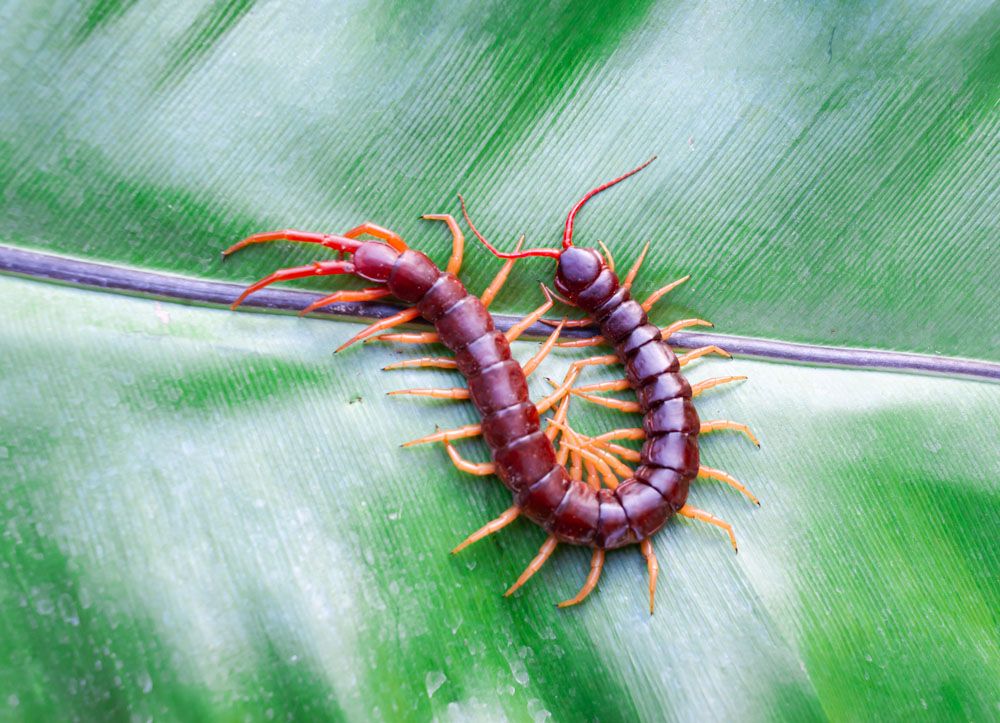
Centipedes
Centipedes
Class: Chilopoda
Common Name: House centipede, yellow-leg centipede, red-headed centipede
Appearance: Centipedes are elongated, segmented arthropods with a pair of legs in each segment. The number of leg pairs is always odd, ranging from 15 to 177 pairs. They also have a pair of antennae and venomous claws called forcipules. Depending upon the species, they may be 4mm to 152mm in size. These are land-dwelling insects, hence their characteristic brownish-red color.
Host Plants or Food: They are general predators, which means they can feed on all soft-bodied insects. Some common prey includes caterpillars, spiders, mites, and ticks.
Territory: Throughout North America, Western USA, Eastern USA, Australia, Europe, Asia, Gulf States
Mode of Damage: By feeding on other insects, they keep the density of pests in check, proving to be beneficial garden insects.
Habits and Life History:
Centipedes are found in almost all kinds of habitats, from deserts to forests. They prefer high moisture, humid areas such as beneath rocks, barks, basements, and plantations.
They sense their prey through the antennae and hunt them down.
Female centipedes lay eggs under the soil, which gives rise to larvae. They go through simple metamorphosis to turn into a complete adult.
The larvae consist of fewer segments and legs, and the number gradually increases with each molt.
The overall life of centipedes is between one year to six years.
